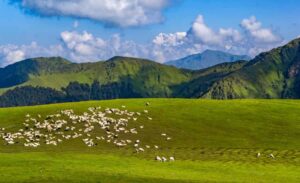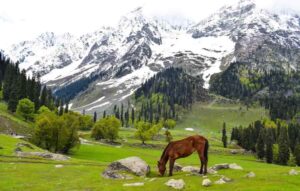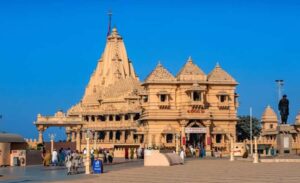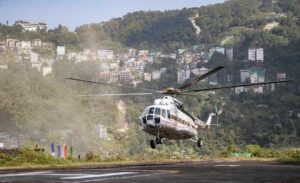Best Time To Visit Pangong Tso Lake
Pangong Tso, also known as Pangong Lake, is a mesmerizing high-altitude lake situated in the Ladakh region of the Indian state of Jammu and Kashmir. It has gained immense popularity in recent years, thanks in part to its stunning natural beauty and its appearance in the Bollywood movie “3 Idiots.” The lake stretches across the borders of India and China, and it’s a must-visit destination for nature enthusiasts and adventure seekers.
To make the most of your trip to Pangong Tso, it’s essential to plan your visit at the right time of the year, considering the weather, temperature, and season. In this comprehensive guide, we’ll walk you through the various seasons and their associated conditions to help you choose the best time to visit Pangong Tso.

Pangong Tso Weather Overview
Pangong Tso is located at a high altitude of approximately 4,350 meters (14,270 feet) above sea level. This elevation significantly influences the climate and weather patterns in the region. The lake is surrounded by rugged mountains, which further contribute to the unique weather conditions experienced here. The weather can be extreme and unpredictable, so understanding the seasonal variations is crucial for planning a successful trip.
Here’s an overview of the weather at Pangong Tso throughout the year:
Summer (May to September)
- Summer is the most popular and favorable time to visit Pangong Tso. The weather during these months is relatively mild and pleasant.
- Daytime temperatures range from 10°C to 30°C (50°F to 86°F). It’s the warmest time of the year, making it suitable for various outdoor activities.
- The lake thaws during this period, revealing its stunning shades of blue. The water is relatively calm and can be enjoyed for boating and photography.
- You can expect clear skies and ample sunlight, making it a great time for photography and enjoying the breathtaking landscapes.
Road accessibility to Pangong Tso is usually at its best during these months.
Autumn (October to November)
- Autumn is a transitional season, with temperatures starting to drop. It’s a good time for those who prefer cooler weather and smaller crowds.
- Daytime temperatures range from 5°C to 20°C (41°F to 68°F), and nights can be quite chilly.
- The landscape takes on vibrant hues of gold and red as the vegetation changes with the season.
- While the weather is generally pleasant, it’s essential to keep an eye on the weather forecasts, as occasional snowfall can occur in November.
Winter (December to March)
- Winter is the most challenging season to visit Pangong Tso due to extreme cold and limited accessibility.
- Daytime temperatures often stay below freezing, ranging from -5°C to 10°C (23°F to 50°F). Nights can be bone-chillingly cold, with temperatures dropping well below freezing.
- The lake freezes over, creating a surreal, icy landscape. However, this also means no water-based activities are possible during this time.
- Snowfall is frequent, and the region is often covered in a thick blanket of snow, which can lead to road closures and transportation challenges.
- Only the hardiest of travelers and photographers visit Pangong Tso during winter to witness its unique, frozen beauty.
Spring (April)
- Spring marks the beginning of the tourist season in Ladakh, with temperatures slowly rising from the extreme cold of winter.
- Daytime temperatures range from 5°C to 15°C (41°F to 59°F). Nights can still be quite cold, and some high-altitude areas may remain snow-covered.
- The lake starts to thaw, offering a mix of icy and liquid sections. It’s a good time for photography and capturing the transformation of the landscape from winter to spring.
Factors to Consider
When deciding on the best time to visit Pangong Tso, it’s crucial to consider various factors that can affect your experience:
- Road Accessibility: The road to Pangong Tso, especially the Chang La pass, is subject to closures during the winter months due to heavy snowfall. If you plan to visit in winter or early spring, be prepared for possible roadblocks and limited transportation options.
- Crowds: The summer months are the peak tourist season, and Pangong Tso can get quite crowded. If you prefer a more peaceful and less crowded experience, consider visiting during the shoulder seasons of spring and autumn.
- Photography: If you’re a photography enthusiast, you might want to plan your visit during spring or autumn when the changing landscapes and mild weather provide excellent photo opportunities.
- Adventure Activities: Summer is the best time for adventure activities like camping, trekking, and boating on the lake. Winter, on the other hand, is suitable for those interested in a unique frozen landscape and photography.
- Temperature Preferences: Consider your tolerance for cold weather. If you can handle sub-zero temperatures, you might enjoy the winter experience, but if you prefer milder conditions, the summer and early autumn are your best bet.
Monthly Breakdown of Weather and Temperature
Now, let’s break down the weather and temperature conditions month by month to help you decide when to plan your trip to Pangong Tso:
May:
- Average Daytime Temperature: 15°C to 20°C (59°F to 68°F)
- Average Nighttime Temperature: -5°C to 5°C (23°F to 41°F)
- Weather: Pleasant, clear skies, and thawing lake. Ideal for all activities.
June:
- Average Daytime Temperature: 20°C to 25°C (68°F to 77°F)
- Average Nighttime Temperature: 5°C to 10°C (41°F to 50°F)
- Weather: Warm and sunny. Perfect for photography and outdoor adventures.
July:
- Average Daytime Temperature: 25°C to 30°C (77°F to 86°F)
- Average Nighttime Temperature: 10°C to 15°C (50°F to 59°F)
- Weather: Peak summer with the warmest temperatures. Great for water activities and camping.
August:
- Average Daytime Temperature: 25°C to 30°C (77°F to 86°F)
- Average Nighttime Temperature: 10°C to 15°C (50°F to 59°F)
- Weather: Similar to July, but with the chance of occasional rain showers.
September:
- Average Daytime Temperature: 20°C to 25°C (68°F to 77°F)
- Average Nighttime Temperature: 5°C to 10°C (41°F to 50°F)
- Weather: Post-monsoon, with clear skies and pleasant temperatures. Suitable for various activities.
October:
- Average Daytime Temperature: 10°C to 15°C (50°F to 59°F)
- Average Nighttime Temperature: -5°C to 5°C (23°F to 41°F)
- Weather: Cooling down, with colorful landscapes as vegetation changes. Less crowded than summer.
November:
- Average Daytime Temperature: 5°C to 10°C (41°F to 50°F)
- Average Nighttime Temperature: -10°C to 0°C (14°F to 32°F)
- Weather: Transition to winter, with occasional snowfall. Cold nights.
December:
- Average Daytime Temperature: -5°C to 0°C (23°F to 32°F)
- Average Nighttime Temperature: -15°C to -10°C (5°F to 14°F)
- Weather: Winter sets in, with the lake frozen. Extreme cold, and limited accessibility.
January:
- Average Daytime Temperature: -10°C to -5°C (14°F to 23°F)
- Average Nighttime Temperature: -20°C to -15°C (-4°F to 5°F)
- Weather: Deep winter, with heavy snow and very low temperatures. Not recommended for most travelers.
February:
- Average Daytime Temperature: -10°C to -5°C (14°F to 23°F)
- Average Nighttime Temperature: -20°C to -15°C (-4°F to 5°F)
- Weather: Continued winter conditions, limited mobility.
March:
- Average Daytime Temperature: -5°C to 5°C (23°F to 41°F)
- Average Nighttime Temperature: -15°C to -10°C (5°F to 14°F)
- Weather: Transition to spring, with slowly rising temperatures and thawing lake.
April:
- Average Daytime Temperature: 5°C to 10°C (41°F to 50°F)
- Average Nighttime Temperature: -5°C to 0°C (23°F to 32°F)
- Weather: Early spring, with a mix of ice and liquid lake. A good time for photographers.
Conclusion
Choosing the best time to visit Pangong Tso largely depends on your preferences and the kind of experience you seek. Summer and early autumn are the most popular and favorable times for most travelers, offering pleasant weather and accessibility. However, if you’re interested in witnessing the lake’s frozen beauty or prefer a quieter atmosphere, winter and early spring can be appealing options. No matter when you visit, Pangong Tso’s unique and enchanting landscapes are sure to leave a lasting impression.
Must Read:






